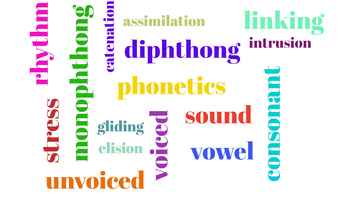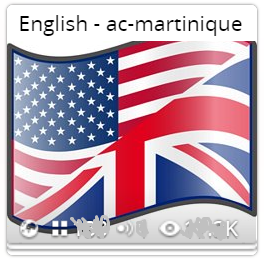
The 44 sounds of English
There are 44 sounds in English . In comparison, there are 37 sounds in French.
There are 24 consonant sounds, 12 monophthong vowel sounds and 8 diphthong vowel sounds. Diphthongs are a combination of two vowel sounds.
The most common sound in English is what makes it difficult for French learners to understand English: it is called the SCHWA sound. Its symbol in IPA (International Phonetic Alphabet) is an reversed « e » /ə/
A chart illustrates all the sounds of English. It is called the « Phonemic chart« . All the sounds are organized in a specific way.
24 consonant sounds
There are 24 consonant sounds.
These consonants are produced in different ways. It is useful for English teachers to know how consonant sounds are produced and what they are called so that they can explain how to produce these sounds to the students. However, students in primary or secondary schools don’t need to know these scientific terms: plosive, nasal, fricative, affricate, approximant, bilabial, dental, glottal, alveolar, palato-aveolar…
Some consonant sounds are voiced or unvoiced. A voiced sound releases air through the trachea: windpipe , so the vocal cords vibrate. If you place your hand on your throat, you should feel the vibration. This is an easy way for students to become aware of voiced sounds (voiced consonants and all vowel sounds)
12 monophthong vowel sounds
There are 12 monophthong vowel sounds in English.
All vowel sounds are voiced sounds.
8 diphthong sounds
Diphthongs are a combination of two vowels sounds that glide from the first vowel to the second to form a single phoneme (and syllable). There are 8 diphthongs in the English language.
Écoutez la dictée de mots si besoin
Stress and Rhythm
English is a stress-timed language, while French is syllable-timed
In stress-timed languages, the accented or stressed syllables are pronounced at regular intervals while the unstressed syllables are shortened to keep the rhythm. .
Content words or lexical words are the words in a sentence that contain or convey information. These wwords are nouns, verbs, adjectives, adverbs.
In words of more than one syllable, only one syllable is stressed. The stressed syllable is more dynamic, longer, louder, and higher in pitch.
In phonetics, the stress (accent) is indicated by an apostrophe (‘) before the stressed syllable /’sɪləbl/
Unstressed vowel sounds are usually pronounced in their weak forms, and very often with a SCHWA sound /ə/
Linking
Linking, occurs when word boundaries merge together to ease the shift from one word to another
There are two main types of linking
– catenation: when the last sound of a word is a consonant (C) and the first sound of the next word is a vowel.(V)
example: « what is it? » /wɒt ɪz ɪt/ –> /wɒ tɪ zɪt/
– intrusion: when an extra sound, either /r/, /w/ or /j/, intrudes between two words
examples: « law and order » /lɔː ənˈɔːdə/ –> /lɔː rənˈɔːdə/
« blue automobile » /bluː ˈɔːtəməʊbiːl/ –> /bluː ˈwɔːtəməʊbiːl/
« She answered » /ʃi ˈɑːnsəd/ –> /ʃi ˈjɑːnsəd/
Assimilation
Assimilation occurs in connected speech when one or more sounds change in contact with other sounds. Assimilations can occur within words or between two words.
There are 3 types of assimilations.
– progressive assimilation: a preceding sound has an effect on a following one
example: « read this » /ri:d ðɪs/ –> /ri:d dis/
–regressive assimilation : a following sound has an effect on a preceding one
example: « have to » /həv tʊ/ –> /həf to/
– coalescent assimilation (yod coalescence) : a fusion of 2 sounds resulting in a new sound. Coalescent assimilation occurs in English when an alveolar plosive or fricative /t, d, s, z/ is followed by a semi-vowel /j/ to produce /tʃ/, /dʒ/, /ʃ,/ or /ʒ/,
example: « don’t you? », /dəʊnt jə/ –> /dəʊnʧjə/
Elision
Elision is the omission of a sound in speech. Elision is common in casual conversation. Elision may refer to the omission of an unstressed vowel, consonant, or syllable. Elision is common in 3 consonant sound clusters
examples: « fast car » /fɑːst kɑː/ –> /fɑːs kɑː/
« Britain » /ˈbrɪtn/
« cup of tea » /kʌp ə tiː/



